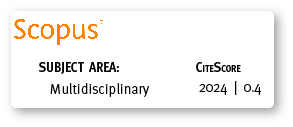Estudio comparativo entre la atención del alumbramiento activo modificado y el alumbramiento activo
DOI:
https://doi.org/10.18537/mskn.03.01.03Palabras clave:
tercer periodo de parto, alumbramiento activo modificado, alumbramiento activoResumen
Se inició un proyecto de investigación para comparar el método de atención del alumbramiento activo modificado con el método activo durante el tercer periodo del parto. En el método de atención del alumbramiento activo modificado se utilizó un signo directo para verificar el descenso placentario, el examen vaginal, en contraste con el método de los indicadores indirectos prescritos por el Ministerio de Salud Pública del Ecuador. Una muestra aleatorizada de 300 mujeres en labor de parto fueron atendidas en cada grupo. La investigación fue realizada en el Hospital Vicente Corral Moscoso de Cuenca, Ecuador, y fueron monitorizadas las siguientes variables durante el tercer periodo de atención del parto para evaluar el comportamiento de ambos métodos de atención: duración del tercer periodo del parto, pérdida de sangre, frecuencia de la retención parcial y total placentaria, volumen de la pérdida de sangre durante la primera hora posterior al tercer periodo del parto. Los resultados revelaron que el promedio de duración del tercer periodo del parto en el alumbramiento activo modificado fue 4,35 ± 1,36 versus 4,22 ± 1,60 minutos en el alumbramiento activo con un valor de p igual a 0,297, que indica que la duración del tercer periodo del parto en los dos tipos de atención fue similar. La media de la pérdida de sangre en el método activo modificado fue 193 ± 66,97 versus 182,97 ± 54,62 cc para la atención del alumbramiento activo con un valor de p igual a 0,045. La investigación comparativa reveló que las dos formas de atención durante el tercer periodo del parto presentaron resultados iguales, con beneficio para la forma de atención activa.
Descargas
Métricas
Citas
Botero, J., Jubiz, A., Henao, G. (Eds.), 2008. Obstetricia y Ginecología: Texto integrado. 8ª edición, Editorial Québec World, Bogotá, p. 152-153.
Cárdenas, O., 2003. Estudio comparativo entre el alumbramiento activo y el alumbramiento expectante. Tesis para la Obtención de Maestría en Investigación en Salud. Universidad de Cuenca, Cuenca, Ecuador.
Cárdenas, O., Molina, X., Narváez, J., 2003. Atención del parto en posición vertical materna. Diseño y construcción del equipo médico para la atención del parto en posición vertical materna. 1a edición. Editorial Universidad de Cuenca, Cuenca, Ecuador, p. 58-61, 74.
Carrera, J., Mallabre, D., Bernar, Z., 2006. Protocolos de obstetricia y medicina perinatal. 4a edición. Editorial Masson, España, p. 358-359.
Cifuentes, R. (Ed.), 2009. Ginecología y obstetricia basada en las nuevas evidencias. 2a edición. Editorial Distribuna, Bogotá, p. 23.
Quintero, F., 1999. Estudio comparativo entre la atención del alumbramiento expectante y activo. Tesis de Posgrado de Ginecología y Obstetricia. Universidad de Cuenca, Cuenca, Ecuador.
McDonald, S., Prendiville, W.J., Elbourne, D., 2002. Sintometrina profiláctiva versus oxitocina en el alumbramiento. 5ª edición. Biblioteca de Salud Reproductiva de la OMS, CD-ROM Versión 1.0.
Ministerio de Salud Pública, 2008. Norma y protocolo materno. 1ª edición, MSP, Quito, Ecuador, p. 46-47.
Organización Mundial de la Salud (OMS), 2001. Manejo de las complicaciones del embarazo y el parto. 1ª edición. WHO/RHR/00.7, 438 pp.
Pérez Sánchez, A., Donoso Siña, E., 2011. Obstetricia. 4ª edición. Editorial Mediterráneo, Santiago de Chile, p. 360-362.
Prendiville, W., Elbourne, D., McDonald, S., 2000. Active versus expectant management in the third stage of labor. Meta-analyses Cochrane Review. The Cochrane Database Syst. Rev., Issue 3, CD000007, Oxford, UK.
Rogers, J., Wood, J., McCandlish, R., Ayers, S., Truesdale, A., Elbourne, D., 1998. Active versus expectant management of third stage of labour: the Hinchingbrooke randomized controlled trial. Lancet, 351(9104), 693-699.
Schwarcz, R., Fescina, R., Duverges, C., 2005. Obstetricia. 6ª edición. Editorial El Ateneo, Buenos Aires, Argentina, p. 491-494.
Descargas
Publicado
Cómo citar
Número
Sección
Licencia
Copyright © Autors. Creative Commons Attribution 4.0 License para cualquier artículo enviado a partir del 6 de junio de 2017. Para los manuscritos presentados anteriormente, se utilizó la licencia CC BY 3.0.
![]()
Usted es libre de:
 |
Compartir — compartir y redistribuir el material publicado en cualquier medio o formato. |
 |
Adaptar — combinar, transformar y construir sobre el material para cualquier propósito, incluso comercialmente. |
Bajo las siguientes condiciones:
 |
Atribución — Debe otorgar el crédito correspondiente, proporcionar un enlace a la licencia e indicar si se realizaron cambios. Puede hacerlo de cualquier manera razonable, pero de ninguna manera que sugiera que el licenciador lo respalda a usted o a su uso. |
| Sin restricciones adicionales: no puede aplicar términos legales o medidas tecnológicas que restrinjan legalmente a otros a hacer cualquier cosa que permita la licencia. |
Mayor información sobre este acuerdo de autoría y licencia, transferencia de derechos o solicitudes de reproducción, pueden ser consultados en este enlace.









